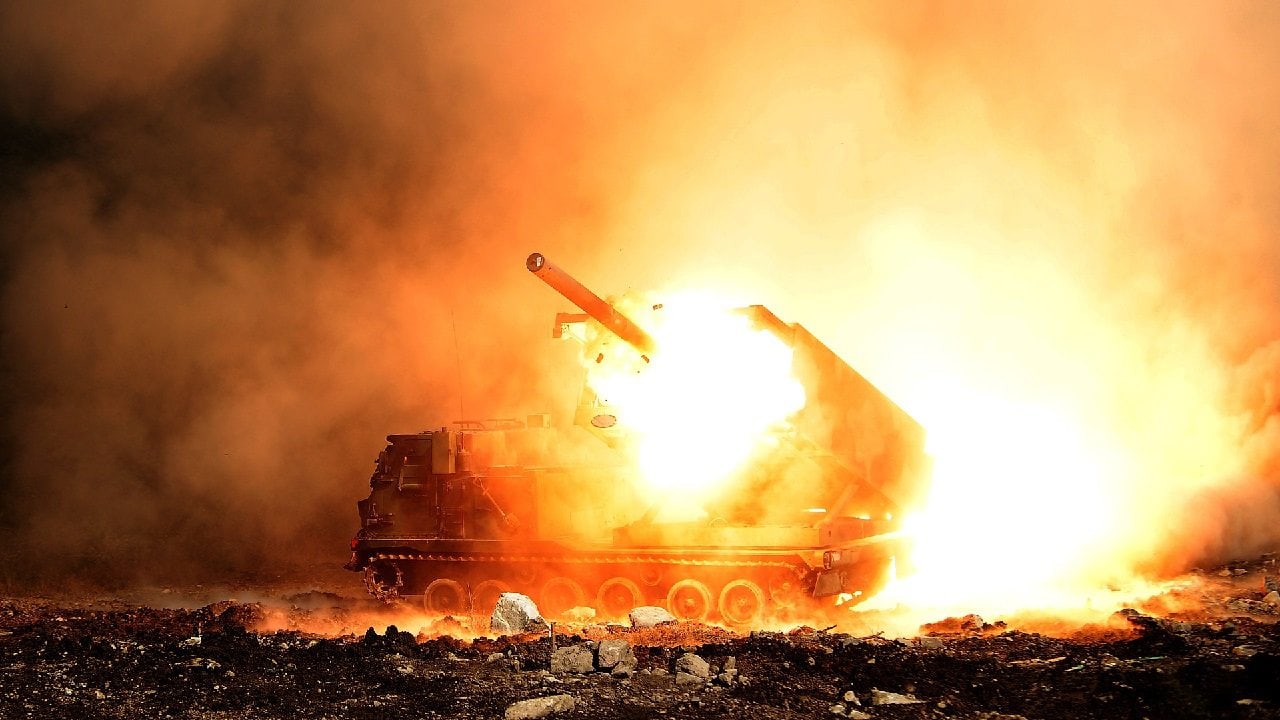Russian forces suffered some serious blows in recent weeks as Ukraine’s counteroffensive picked up pace.
From attacks targeting the Russian-occupied Crimean Peninsula to breaking through major defensive lines, Kyiv is beginning to make notable progress in its effort to recapture occupied territories.
Since the onset of the invasion, Moscow’s arsenals of main battle tanks, air defense systems, and infantry fighting vehicles have been hit hard by Kyiv’s arsenal of advanced Western weaponry.
Last week, another Russian system fell. Open-source intelligence group Ukraine Weapons Tracker published footage of a 2S9 Nona-S 120mm self-propelled mortar taken out by a First Person View loitering munition launched by Ukraine’s 72nd Mechanized Brigade. The encounter reportedly took place in Donetsk Oblast, which has seen a lot of fighting over the last year and a half. The short clip released by @UAWeapons shows a powerful detonation.
Introducing Moscow’s Nona
Like many of the weapons systems deployed by Moscow during its invasion of Ukraine, the 2S9 Newest Ordnance of Ground Artillery, or Nona, was designed by the Soviets. The system entered service with the Soviet Army in 1981, and it was publicly revealed four years later. The amphibious vehicle is powered by two rear water-jets and is compatible with rifled rounds and 120mm mortar mines.
Additional details surrounding the Nona are outlined by Military Today:
“Maximum range of fire is 8.85 km with ordinary projectiles, 12.8 km with rocket-assisted projectiles and 7.1 km with mines. Minimal firing range is 1.7 km with rifled rounds and 400 m with mines. The Nona-S can engage armored vehicles. Its armor-piercing round penetrates 600-650 mm steel plate at a range of 1 000 m. It is also compatible with the Kitolov-2 precision guided munitions. The Kitolov-2 laser-guided round has a maximum range of 9 km and a hit probability of 80-90%.”
The artillery system was deployed in Afghanistan and in both Chechen Wars. Although the Nona has solid capabilities, it has not performed well in Ukraine. According to Dutch open-source tracker Oryx, Moscow has lost at least 31 of its 120mm 2S9 Nona systems since the war began in February 2022.
While artillery continues to play a significant role in the Ukraine war, unmanned aerial vehicles are just as prominently deployed by both sides. These small, inexpensive, and lethal weapons have caused serious damage to critical infrastructure, armored vehicles and other military assets. Last spring, Moscow procured Iran-designed combat UAVs, including the Shahed family of systems. Ukraine has also acquired foreign UAVs, including the American-made Switchblade and Turkish-made Bayraktar-TB2 drones.
A Growing, Lethal Role for Drones
Loitering munitions have been especially deadly in the war, as these UAVs can linger around a target area before striking. Referred to as “suicide” or “kamikaze” drones, these one-time-use weapons have been used effectively by Kyiv to take out Moscow’s already dwindling arsenal of military equipment. In fact, experts estimate that Russia has lost at least 2,000 tanks since February 2022, in addition to countless infantry fighting vehicles, artillery systems, air defense systems and airframes. While loitering drones have not been responsible for each attack, they have certainly elevated Kyiv’s offensive capabilities.
#Ukraine: A Russian 2S9 Nona-S 120mm self-propelled mortar was destroyed by a FPV loitering munition of the Ukrainian 72nd Mechanized Brigade in #Donetsk Oblast.
Again, we can see a powerful ammo detonation, common with this type of vehicle. pic.twitter.com/ujAcmTSrrY
— ???????? Ukraine Weapons Tracker (@UAWeapons) September 24, 2023
Maya Carlin, a Senior Editor for 19FortyFive, is an analyst with the Center for Security Policy and a former Anna Sobol Levy Fellow at IDC Herzliya in Israel. She has by-lines in many publications, including The National Interest, Jerusalem Post, and Times of Israel. You can follow her on Twitter: @MayaCarlin.

